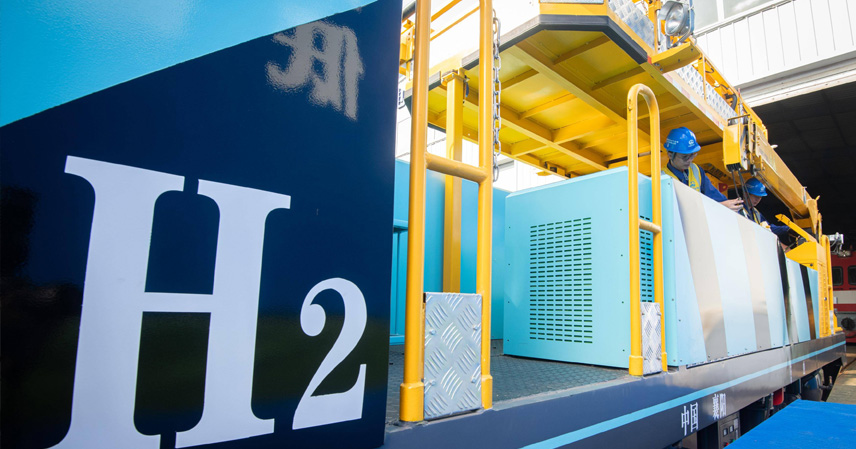Have you ever imagined a train that runs not on electricity or diesel, but on hydrogen—and the only thing it emits is a glass of pure water?
On the test tracks in western Changchun, Jilin Province, China’s first domestically developed hydrogen-powered commuter train has successfully completed its trial run. Built by CRRC Changchun Railway Vehicles, this futuristic “train of tomorrow” doesn’t just look like something out of a sci-fi movie—it proves that hydrogen energy is moving from the lab into real-world transportation.
This isn’t just a technology demo—it’s a critical step toward China’s “dual carbon” goals of peaking emissions and achieving carbon neutrality.
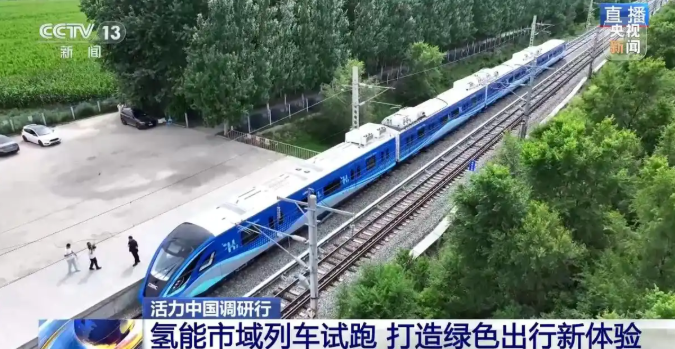
A Sci-Fi Look with Real-World Breakthroughs
The sleek, deep-blue train, marked with striking “H₂” symbols, symbolizes China’s breakthrough in hydrogen-powered rail transit.
Its most impressive feature lies in its hydrogen fuel cell system, mounted on the roof. By combining hydrogen and oxygen to generate electricity, the train produces no smoke, no carbon, and no pollution—only water vapor. After condensation, the by-product is drinkable water (though no one actually drinks it).
In other words, this is a true zero-emission train. No tailpipe gases, no engine roar—just a quiet, efficient system that converts chemical energy into electricity to power the motors.
160 km/h Speed, 1,000 km Range on a Single Fill
Don’t mistake it as only “green” technology—its performance is equally impressive.
This train reaches a top speed of 160 km/h, nearly twice as fast as a typical metro. Designed for regional commuter networks, it can cover 1,000 km on a single hydrogen refill.
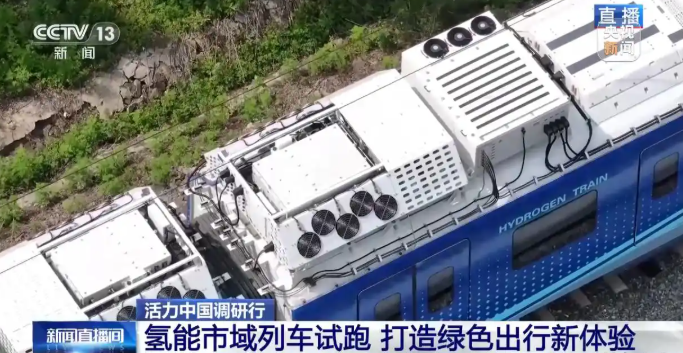
To put it in perspective: that’s more than three round trips between Changchun and Shenyang (310 km one way), or about half the distance of a Beijing–Shanghai high-speed rail journey. Refueling takes only a few minutes—much faster than charging an electric vehicle.
Inside, the carriages are more spacious than metro trains, with seating closer to that of intercity trains. The interior features eco-friendly materials, soft lighting, and noise-reducing floors, creating a travel experience that feels almost like “a journey that breathes.”
Tested Against the Extremes: From -35℃ to 35℃
Far from being just for show, the hydrogen train has undergone rigorous tests for energy efficiency, braking, traction, and dynamics.
Remarkably, it has proven reliable in extreme temperatures ranging from -35℃ to 35℃, ensuring stable operation in both northern winters and southern summers.
This achievement highlights the integration of hydrogen technology with China’s advanced equipment manufacturing, ensuring performance across multiple systems and scenarios.
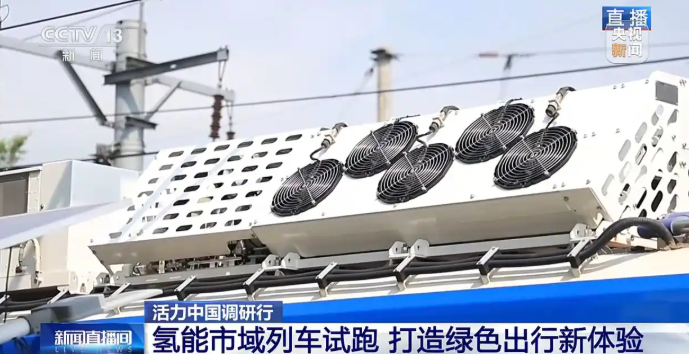
Why Hydrogen, and Why Now?
For years, hydrogen energy struggled with three barriers: high cost, difficult storage/transport, and a lack of fueling stations. But these challenges are gradually being overcome.
- The train’s fuel cells are now domestically produced.
- Hydrogen can be sourced from industrial by-products or produced cleanly from solar and wind power—so-called “green hydrogen.”
- Hydrogen refueling infrastructure is expanding, with more stations being built nationwide.
Rail transit is an ideal starting point for hydrogen adoption because it’s a controlled and closed environment, unlike trying to switch every household car to hydrogen. Starting with buses, intercity trains, and regional commuter systems is far more practical.
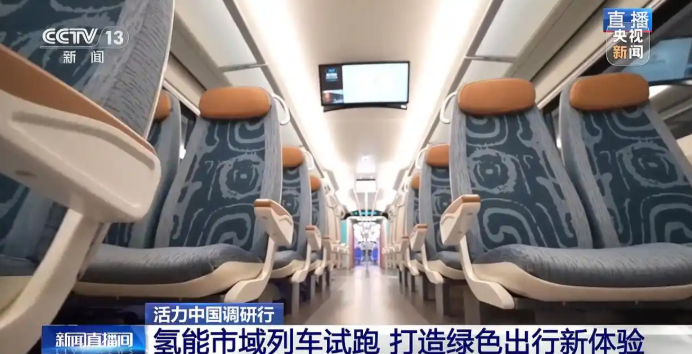
More Than a Train: A Catalyst for the Hydrogen Economy
This hydrogen-powered commuter train represents more than a new transport option—it’s a trigger for the hydrogen industry.
Behind it lies China’s rapidly growing hydrogen value chain: from production and storage to transportation, fuel cells, and vehicle integration.
Jilin Province, a traditional industrial base, is positioning itself as a hydrogen pioneer, using this breakthrough to push forward its green transformation.
The choice of a “commuter train” model is also strategic. Unlike high-speed rail (long distance) or metros (urban only), this type of train connects cities with nearby suburbs, airports, and satellite towns—routes where hydrogen’s long range and efficiency are especially useful.
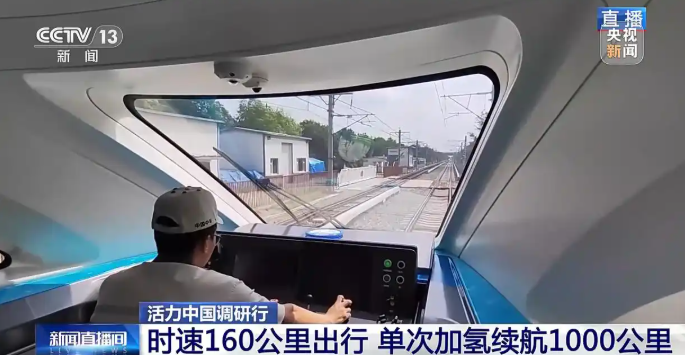
Looking Ahead: The Hydrogen Era
While hydrogen trains are not yet in mass commercial service, this test run paints a picture of a cleaner, smarter commuting future.
In city clusters like the Yangtze River Delta, Greater Bay Area, and Chengdu-Chongqing region, where “one-hour commuter circles” are taking shape, hydrogen-powered trains could become the perfect fit.
This milestone suggests that the hydrogen era is approaching faster than many expected—not only reshaping transportation, but accelerating the entire green energy transition.
References
- CRRC Changchun Railway Vehicles official announcement (2025)
- China Hydrogen Energy Development Roadmap (2023–2025)
- Jilin Province Green Industry Report (2024)

